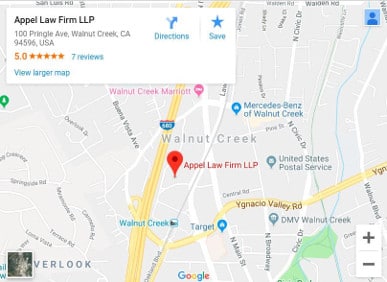
Passenger Safety and Liability Implications
How exactly do these ride sharing apps work? According to the news article, “Lyft connects people needing rides around San Francisco with drivers who pick them up in private vehicles. Drivers are screened and insured by the companies, and collect “suggested” but voluntary donations for their rides.” What does this mean for you, the passenger, in terms of staying safe while using these ride sharing apps. Fortunately, Lyft does take some preventative measures to ensure rider safety including:
- Background and DMV record checks: Every driver who applies to become a part of Lyft is screened for criminal offenses and driving incidents.
- Vehicle inspections: Only car model years 2000 or newer are allowed, and each must pass vehicle safety inspection before a driver hits the road.
- $1,000,000 excess liability insurance: The Lyft platform provides drivers with excess liability insurance up to $1,000,000 per occurrence through an A++ rated insurer. This first-of-its-kind solution appears to offer peace of mind for both drivers and passengers.
However, despite these precautions, there still appears to be plenty of unanswered legal questions. One possible issue is whether Lyft is operating as a “motor vehicle for hire” under the San Francisco Municipal Code, and is therefore subject to the permits and regulations that are required under the California insurance and public utilities code.
In addition to this issue, there may be some other interesting legal implications that could affect one’s ability to recover damages if a passenger was hurt while using Lyft or one of these other popular ride sharing platforms. Let’s assume you are involved in an auto accident as a passenger while using Lyft and have incurred a significant amount of medical bills that you cannot afford. What now? Lyft’s Driver Representations and Warranties located in their Terms of Service state that “Driver represents, warrants and agrees” that:
- Such Driver has a valid policy of liability insurance (in coverage amounts consistent with all applicable legal requirements) for the operation of such Driver’s vehicle to cover any anticipated losses related to such Driver’s provision of rides to Riders.
- Such Driver will be solely responsible for any and all liability which results from or is alleged as a result of the operation of the vehicle such Driver uses to transport Riders, including, but not limited to personal injuries, death and property damages.
- In the event of a motor vehicle accident such Driver will be solely responsible for compliance with any applicable statutory or department of motor vehicles requirements, and for all necessary contacts with such Driver’s insurance carrier.
The Insurance section of the Terms of Service also states that:
So long as Drivers are in compliance with this Agreement (including but not limited to the Driver Representations and Warranties provided below), Lyft provides Drivers with excess automobile liability insurance up to $1,000,000 per occurrence through an A++ insurer. The policy offers excess liability protection over a Driver’s existing insurance during the period from passenger pickup to drop-off for all rides matched on the Lyft Platform. The policy covers liability only and does not provide coverage for collision, comprehensive or wear and tear damage to a Driver’s vehicle. The policy is offered to Drivers at no additional charge and does not affect a Driver’s personal coverage. We do not provide coverage for medical payments arising from a car accident. We recommend that all Drivers and Riders maintain adequate personal health insurance coverage.
Now that we have listed most of the important terms that are available online, what do they mean? One’s ability to recover damages would likely hinge on the Lyft driver’s automobile insurance policy, liability and other related legal issues. However, focusing solely on insurance coverage, the minimum amount of insurance required by California drivers is a $15,000$30,000 policy. If a passenger was involved in a serious accident, this amount of coverage would not likely fully compensate a passenger for their injuries. If this occurred, Lyft’s excess automobile liability insurance could potentially cover the remainder of the damages up to $1,000,000 depending on liability issues. There appears to be no mention of uninsured or underinsured driver insurance scenarios.
It should be noted that the Lyft terms found online are only “an unofficial summary of Lyft’s master insurance policy and may not always be up to date. None of the statements in this section should be interpreted as binding and are provided for quick reference only.”
Whether Lyft will be classified as a taxi remains to be seen, but it certainly is a new and innovative way of thinking about transportation in the San Francisco Bay Area. Thanks for reading Slice of Appel PI today! We hope you continue to read and share it with others.

Speak Your Mind